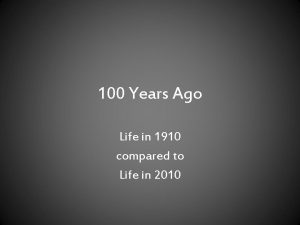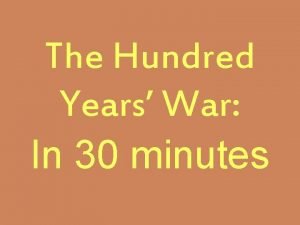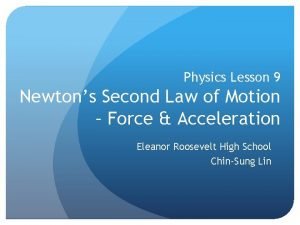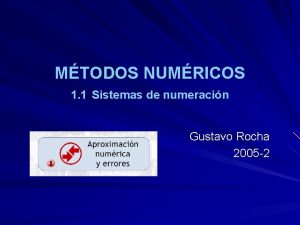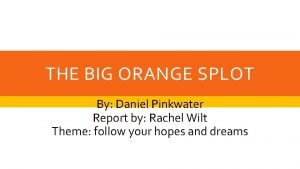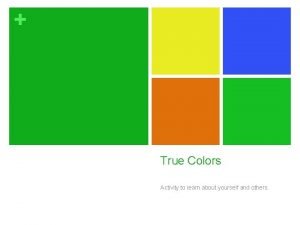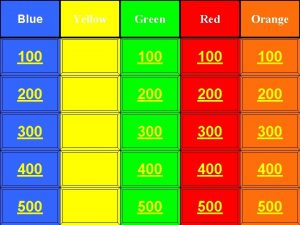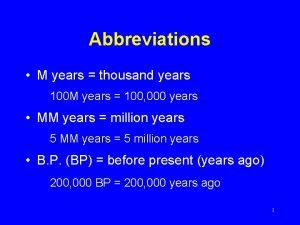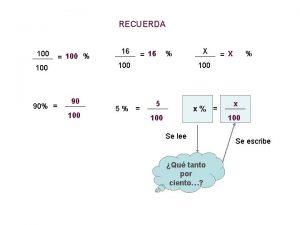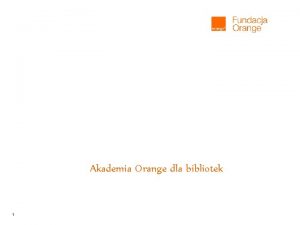Where is this Centaurs 100 Years Orange Centaurs




































- Slides: 36

Where is this?

Centaurs

100 Years Orange: Centaurs Blue Box: Comets Filled Box: Jup. Comets White Circle: Plutinos Red Circle: TNOs Magenta Circle: SDOs

Centaurs definition 1 st discovered largest population a = 5 to 30 AU … not in a 1: 1 resonance with any planet Hidalgo (1920) … Chiron (1977) --- rings Chariklo (260 km) --- rings 399 (JPL 3/8/2017)

Comets definition: an object for which a coma or tail has been observed careful … Main Belt Comets, Centaurs first recorded: Halley’s in 239 BCE largest: Hale-Bopp (60 km) Jupiter Family comets: 651 (have P < 20 yrs) Total population: 3457 in 2017 Hale-Bopp (1997) JPL MBDB 3/12/12

Minor Bodies Beyond Neptune many contributions by Nic Scott

“TNOs” or “KBOs” • Kuiper’s original prediction: objects were scattered to the Oort cloud by Earth-sized Pluto • did not think the objects presently existed • Edgeworth, Leonard, Whipple, et al. made similarly vague claims • none made accurate, precise predictions • observations do not support a single class of objects


TNOs Definition: First: Brightest: Oddballs: Surfaces: a > 30 AU, not a comet or in Oort Cloud Pluto … 1930 … D = 2370 km Eris … 2003 … D = 2326 km Pluto Haumea, Sedna variable atmospheres (? ) sublimation+organic haze diverse ice organic solids

TNOs • • a > 30 AU, most have perihelion > 30 AU various dynamical classes flattened torus … not disk … 10 AU thick at 50 AU source of Centaurs, Jupiter (short period) comets, some outer moons • Pluto discovered 1930 … QB 1 discovered 1992 • > 1000 discovered, at least 70, 000 > 100 km thought to exist (Jewitt) • volatile ices that survived formation epoch (4. 5 Gyr) • > 4% multiplicity

Triton • retrograde orbit … captured during Neptune’s migration? • density 2. 06 g/cm 3 • 40% surface imaged … 60% silicates, 40% ices • T ~ 40 K (variable) • cryovolcanism, “subsurface greenhouse effect” clear ice over dark substrate, 4 K increase could produce 8 km plumes lasting 1+ yr (Soderblom et al. 1990) • plumes make dark deposits, N 2 winds photolysis produced hydrocarbons

Pluto • Pluto + Charon: 1. 5 × 1022 kg ~ 20% mass of Moon • Pluto 1. 86 g/cm 3 + Charon 1. 70 g/cm 3 • 5 moons in system … formed by glancing impact? • not isothermal (T ~ 30 -60) • CH 4 + N 2 atmosphere ~1 -30 microbar and shifts low gravity … rapid atmospheric hydrodynamic escape • steep drop in occultation flux near surface thick surface haze? high temperature gradients? • uneven albedo • bright: N 2, CH 4, H 2 O, CO ices dark: tholins? cryovolcanism? UV processed CH 4 seasonal deposits?

New Horizons

True Color Pluto (Young et al. 2001)

Pluto has 6. 39 day rotation period

composite image Pluto movie: https: //www. youtube. com/watch? v=6 l 4 kr 36 Tz. Q 4&vl=en

Pluto Map no data

Pluto Map no data

Pluto’s Atmosphere as human eye would see it sunlight acting on N 2 and CH 4 tholins

Moon

1. Resonant Objects • mean motion resonance with Neptune • “Plutinos” at 2: 3 • dynamically stable

2. Classical KBOs • between 2: 3 (39. 5 AU) and 1: 2 resonances (48 AU) but not including those • two dynamical classes “cold” e < 0. 1 and i < 10° “hot” e larger and i up to 40° • cold (in situ/near Neptune) are redder than hot

3. Scattered Disk Objects • • ~35 to 40 AU and beyond source of Jupiter family comets flung out when Neptune migrated outward high eccentricity and inclination • first 1996 TL 66 … a = 89 AU, e = 0. 58, i = 24° • also Eris … a = 68 AU, e = 0. 44, i = 44° • scattered and being depleted … OR … in higher order resonances and ~ stable

4. Detached Objects • extended scattered disk/inner Oort Cloud objects • resonances: 1: 3, 2: 7, 3: 11, 5: 22 and 4: 79 and more • Sedna • 2000 CR 105 • 2012 VP 113 … a = 524 AU, e = 0. 85, i = 12° … a = 230 AU, e = 0. 81, i = 23° … a = 266 AU, e = 0. 69, i = 24° • could not have been emplaced via Neptune … passing star … planet 9?

Sedna P ~ e = a ~ ap ~ pe ~ 12, 000 yr 0. 85 524 AU 975 AU


Oort Cloud • TNOs with aphelia > 1000 AU 2017 MB 7 8114 ± 500 AU 2014 FE 72 3390 ± 1400 2012 DR 30 3248. 7 ± 7. 5 2016 FL 59 2454 ± 250000 (33 day obs arc) 2005 VX 3 2081 ± 430 2013 BL 76 2064. 1 ± 5. 1 2015 TG 387 2037 ± 340 2015 KG 163 1612 ± 12 2006 SQ 372 1547 ± 2 2013 SY 99 1297 ± 41 2002 RN 109 1126 ± 49 2013 AZ 60 1062. 00 ± 0. 49 2000 OO 67 1000. 3 ± 3. 8 • probably is not a distinct boundary to Oort cloud • source of Halley family comets

Nice Model Tsiganis et al. (2005) and Gnomes et al. (2005) • • (left) before Jupiter/Saturn 2: 1 resonance (mid) scattering of Kuiper belt objects into the solar system after the orbital shift of Neptune (right) after ejection of Kuiper Belt bodies by Jupiter Neptune migration of ∼ 7 or 8 AU over 10 Myr could account for the resonant populations scattered disk explained by long term perihelic interactions with Neptune accounts for late heavy bombardment period at 3. 8 -3. 9 Gyr explains Hot but not Cold classical KB alternative is scattering and chaotic capture by an eccentric Neptune (Levison et al. 2008)

DEBRIS DISKS ~100 AU – left over from planetary formation, late heavy bombardment period? 20% of systems are thought to harbor DD Space missions: IRAS, HST, ISO, Spitzer, Herschel Far-IR excess (300 K) Sub-mm imaging Visible imaging Structure & asymmetry �exoplanets?

NASA/Goddard/Marc Kuchner and Christopher Stark


Large TNOs • ~ a dozen large TNOs (large ~ 1, 000 km) • • • 2003 UB 313 (Eris) 2005 FY 9 (Makemake) 2003 EL 61 (Haumea) able to retain methane Trujillo & Brown, 2003 survey




Tholin • Reddish nitrogen-rich organic polymer compounds • “precipitated smog” • Formed from atmospheric nitrogen and methane gases or water ice/methane clathrates – Titan tholin • 98. 4% N 2, 1. 6% CH 4 + trace – Triton tholin • 99. 9% N 2, 0. 1% CH 4 • Urey-Miller experiments – Sagan & Khare, Nature (1979) • Destroyed by free oxygen Southwest Research Institute
 100 100 100 100 100
100 100 100 100 100 Apollo with battling lapiths and centaurs
Apollo with battling lapiths and centaurs What is a minotaur
What is a minotaur Héroïne dans la guerre de 100 ans (100 years war).
Héroïne dans la guerre de 100 ans (100 years war). Goat years to human years
Goat years to human years 300 solar years to lunar years
300 solar years to lunar years Four score and seven years meaning
Four score and seven years meaning Sub-saharan africa
Sub-saharan africa Justice definiton
Justice definiton Buendia family tree
Buendia family tree Family life 100 years ago
Family life 100 years ago Consequences of the 100 years war
Consequences of the 100 years war Gcse box plot questions
Gcse box plot questions C/100=f-32/180=k-273/100
C/100=f-32/180=k-273/100 100 200 300
100 200 300 100+100=200
100+100=200 What's 100 + 100
What's 100 + 100 Yüzde 25 fazlası 90 olan sayı kaçtır
Yüzde 25 fazlası 90 olan sayı kaçtır 100 iops/gb and 100,000 iops per volume oci
100 iops/gb and 100,000 iops per volume oci 300 + 300 + 200
300 + 300 + 200 200+200+100+100
200+200+100+100 100 + 100 200
100 + 100 200 Los números romanos del uno al 1000
Los números romanos del uno al 1000 Malloc lab 100/100
Malloc lab 100/100 Combative
Combative Orange county jail commissary
Orange county jail commissary Wild orange doterra pdf
Wild orange doterra pdf The big orange splot house template
The big orange splot house template First 5 alameda
First 5 alameda Towing rates orange county
Towing rates orange county True colors exercise
True colors exercise Orange county utility standards
Orange county utility standards Color hunt blue
Color hunt blue Orange county medical director
Orange county medical director Orange labs services
Orange labs services Orange color background
Orange color background Orange juice advertisement
Orange juice advertisement










